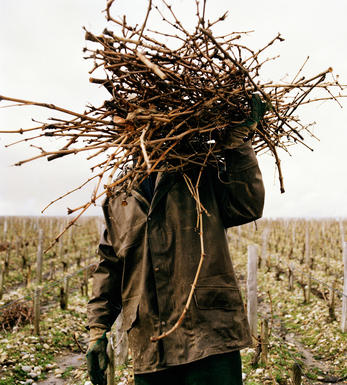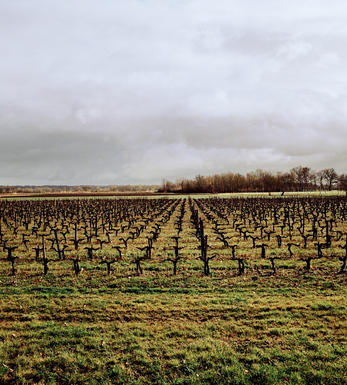
2010 Château de Camensac, Haut-Médoc, Bordeaux

Critics reviews
Robert M. Parker, Jr. - 28/02/2013
Jancis Robinson MW, jancisrobinson.com, April 2011
Wine Spectator, May 2011
(87 Robert Parker- Wine Advocate- Feb 2013)
Possibly the finest Camensac I have tasted, the dense purple-colored 2010 offers loads of fruit (black currants and blackberries) intermixed with subtle notions of smoke, graphite and oak. Medium to full-bodied and rich, it is capable of lasting 15 or more years. It could turn out to be a sleeper of the vintage.
(89-91 Robert Parker, Wine Advocate, May 2011)
About this WINE

Chateau Camensac
For many years, Château Camensac, a 5ème Cru Classé property, remained in obscurity, producing wines well below Cru Classé standard. In 1965 it was bought by the Forner brothers, who also own the well-known Marques de Caceres bodega in Rioja. The two brothers replanted most of the 85 hectares of vineyards, the balance now being 60% Cabernet Sauvignon and 40% Merlot. They also renovated the cuverie and the cellars and hired the renowned Bordeaux oenologist Professor Emile Peynaud as a consultant.
Camensac is now producing very high-quality, concentrated wines that emphasise elegance, finesse, harmony and balance, rather than power and brute force. They are very approachable when young but possess sufficient tannins and structure to continue improving for up to 10 years.

Médoc
The Médoc is arguably the most famous red wine district in the world, home to many of the greatest and most renowned names of Bordeaux. It stretches north-west from the city of Bordeaux with the Gironde estuary to the east. The vineyards extend up to eight miles from the river and run for about 50 miles northwards. It is a surprisingly dull landscape, with the best land found on gravelly outcrops.
The most northerly, low-lying vineyards are classified as Bas-Médoc, whilst those on higher ground, closer to the city of Bordeaux, are entitled to the Haut-Médoc appellation. Within that appellation, there are further communal or village appellations, namely Listrac and Moulis, and the four great names of St. Estèphe, Pauillac, St Julien and Margaux. As a rule of thumb, the greatest wines are made at those properties closest to the river.
Recommended Châteaux from the Bas-Médoc: Ch. Le Boscq, Ch. Patache d'Aux, Ch. Potensac, Ch. la Tour de By, Ch. La Tour Carnet, La Tour Haut-Caussan, Ch. La Tour-St-Bonnet, Ch. Verdignan, Ch. Rolland de By
Recommended châteaux from the Haut-Médoc : Ch. La Lagune, Ch. Cantemerle, Ch d’Agassac, Ch. Belgrave, Ch. Camensac, Ch. Charmail, Ch. Cissac, Ch. Citran, Ch. Lanessan, Ch. Liversan, Ch. du Moulin Rouge, Ch. Sociando-Mallet, Ch. La Tour Carnet, Ch. Verdignan, Ch. d’Arche, Ch. Beaumont, Ch. Lamothe-Bergeron

Cabernet Sauvignon Blend
Cabernet Sauvignon lends itself particularly well in blends with Merlot. This is actually the archetypal Bordeaux blend, though in different proportions in the sub-regions and sometimes topped up with Cabernet Franc, Malbec, and Petit Verdot.
In the Médoc and Graves the percentage of Cabernet Sauvignon in the blend can range from 95% (Mouton-Rothschild) to as low as 40%. It is particularly suited to the dry, warm, free- draining, gravel-rich soils and is responsible for the redolent cassis characteristics as well as the depth of colour, tannic structure and pronounced acidity of Médoc wines. However 100% Cabernet Sauvignon wines can be slightly hollow-tasting in the middle palate and Merlot with its generous, fleshy fruit flavours acts as a perfect foil by filling in this cavity.
In St-Emilion and Pomerol, the blends are Merlot dominated as Cabernet Sauvignon can struggle to ripen there - when it is included, it adds structure and body to the wine. Sassicaia is the most famous Bordeaux blend in Italy and has spawned many imitations, whereby the blend is now firmly established in the New World and particularly in California and Australia.


Buying options
Add to wishlist
Description
Ch. Camensac, Haut-Médoc, Bordeaux
For many years, Fifth Growth Ch. Camensac remained in obscurity, producing wines well below Cru Classé standard. In 1965 it was bought by the Forner brothers, who replanted the vineyards, renovated the cuverie and cellars, and hired the renowned Bordeaux oenologist Professor Emile Peynaud as a consultant. Today the estate produces concentrated wines that emphasise elegance, finesse and balance. This is a sterling effort from 2010, one of the most iconic Bordeaux vintages.
Concentrated blackcurrant and blackberry dominate the nose, with lifted herbal notes along with toasty wood-smoke and baking spice. These complex notes continue through onto the palate with further hedgerow fruit and classic cigar-box notes. Medium-bodied, this wine is still in its youth and will continue to evolve beautifully over the coming eight to 10 years. Drink now to 2027.
wine at a glance
Delivery and quality guarantee